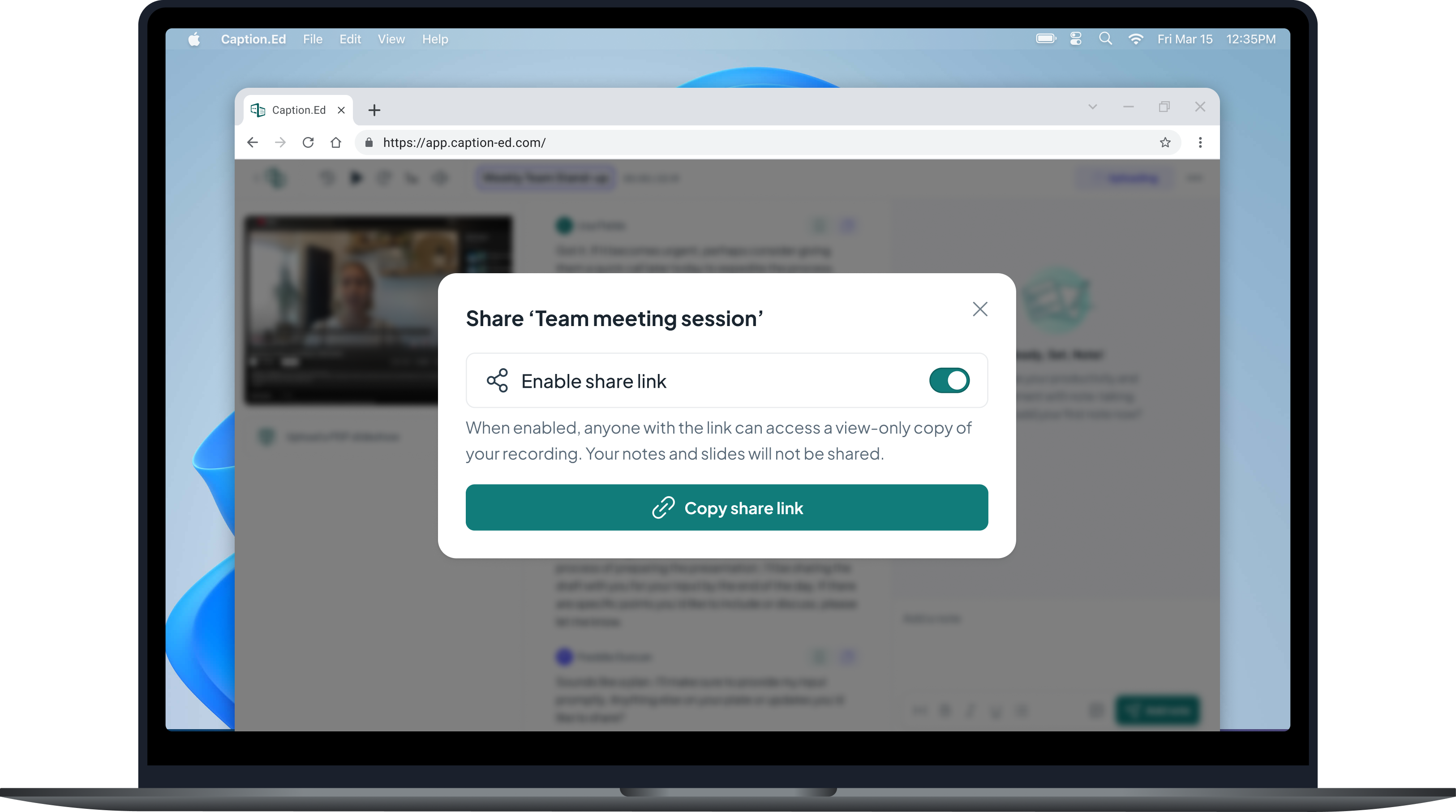Be more productive with Caption.Ed
Caption.Ed for International Students
Access highly accurate, real-time captions with this intuitive and easy to use captioning and note-taking app.
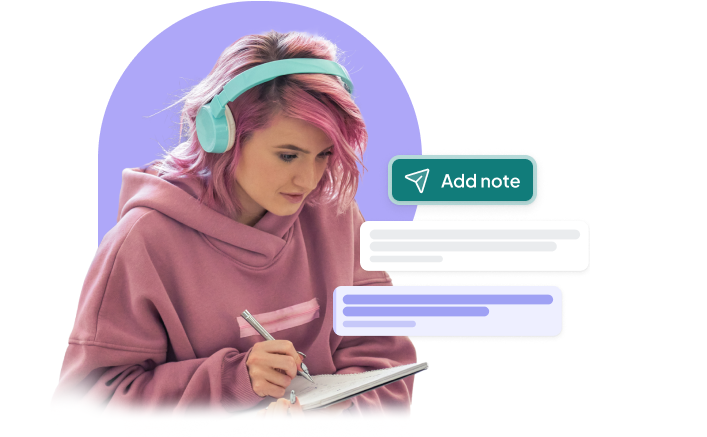
Captioning and note-taking software designed for international students
Caption.Ed gives you access to highly accurate, real-time captions through an intuitive and simple to use app
Whilst most international students come to university with a high level of English, many find it challenging adjusting to local and regional accents. Having live captions during lectures allows them to see what is being said without the extra pressure of straining to hear, or second-guessing themselves.
- Improved focus and concentration
- Enhanced communication
- Better time management
- Boosted confidence and room for creativity

Features which
support international
students
Records audio and video
Caption.Ed allows you to record both video and audio which can serve as a reference point if you missed anything during a lecture or seminar, making it easier to retain key details and revisit information. Working on some coursework and need to revisit a lecture? Not sure what was said in a seminar because of a strong accent? Caption.Ed has you covered.
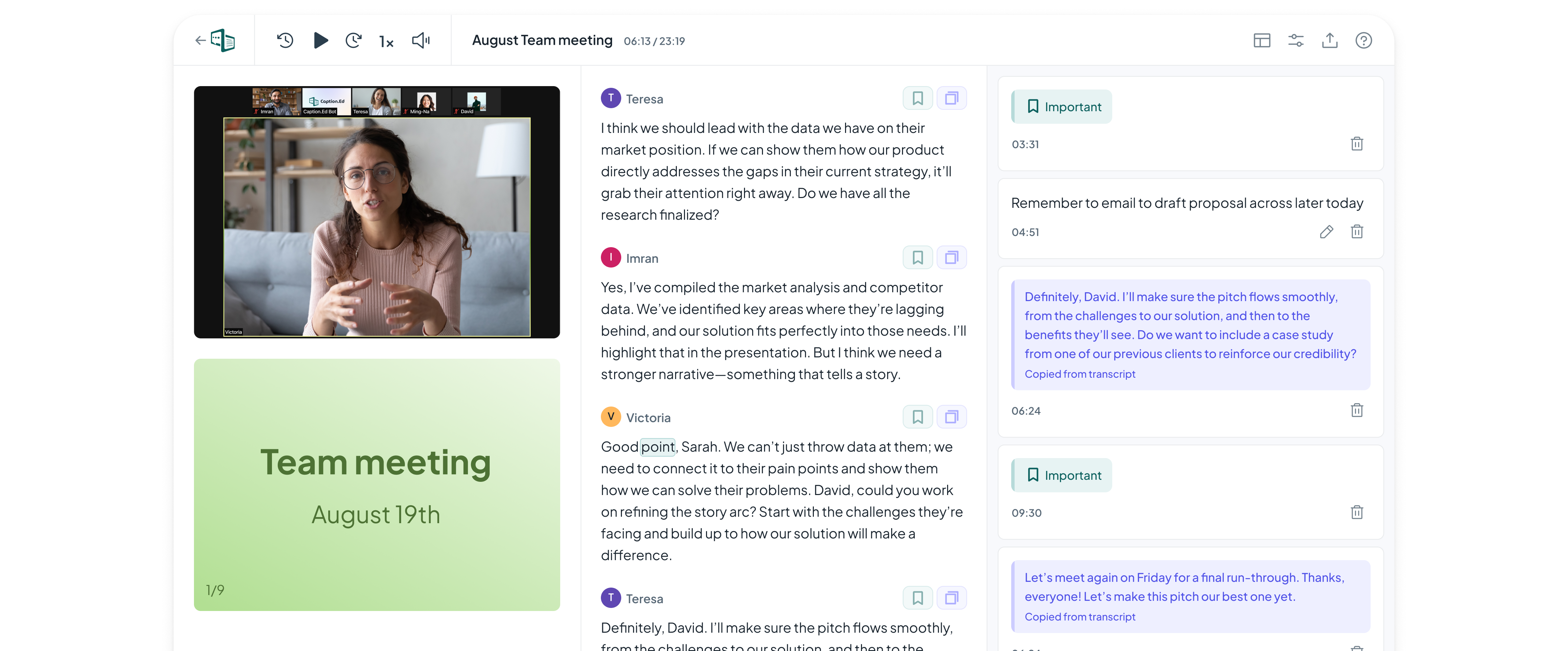
Highly accurate
Captions can provide a visual aid that helps you understand what is being said, but they need to be accurate. Caption.Ed outperforms the major cloud providers like Amazon, Microsoft, and Google, in terms of accuracy.
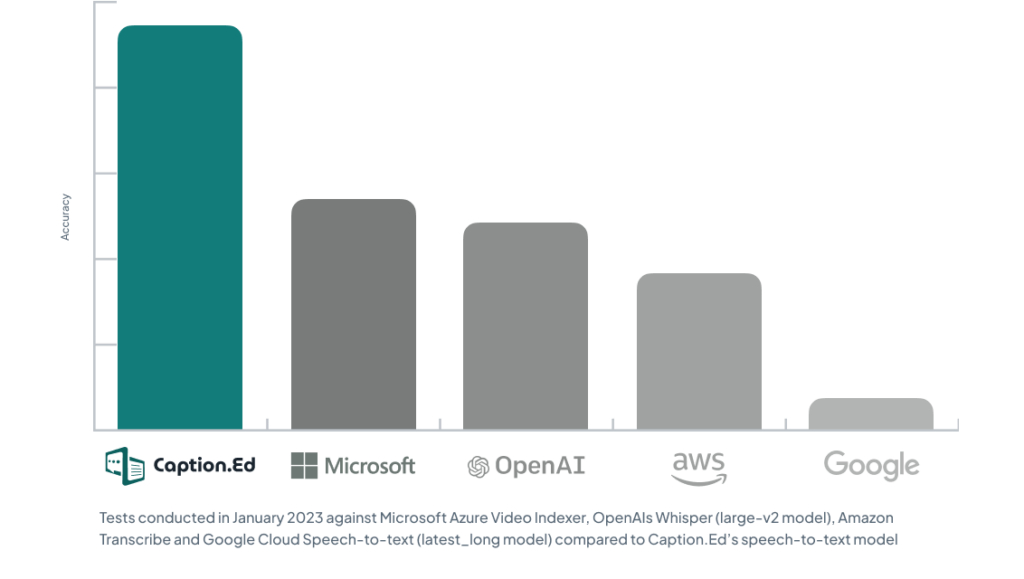
Real-time captions
If you’re relying on captions to keep up with a lecture of seminar, they need to be fast. Caption.Ed returns captions in <1s. This speedy synchronisation means you can truly keep up with the conversation.
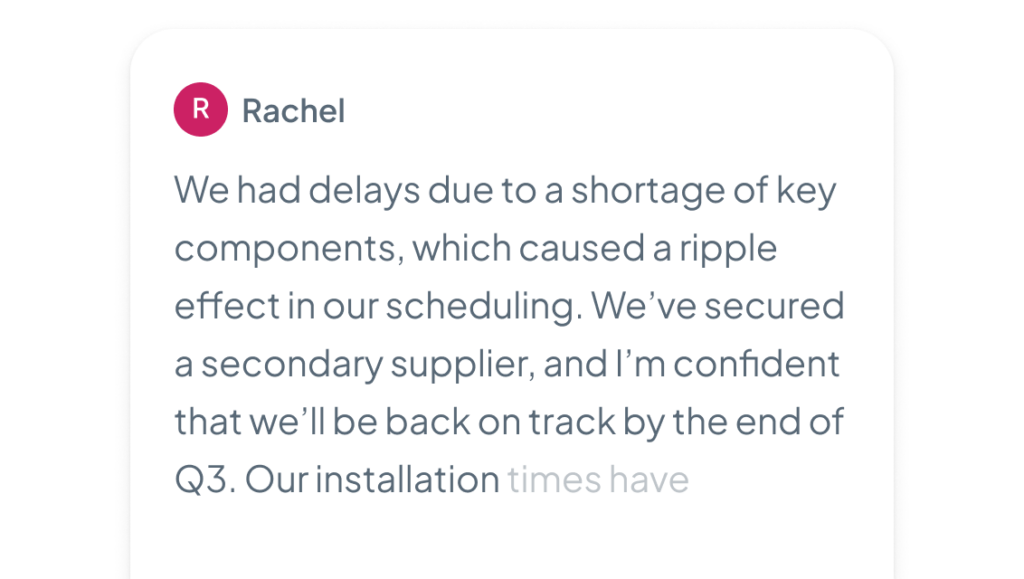
“ Caption.Ed saved the day because it meant that I no longer had to strain my ears trying to listen to what my lecturers were saying ”
Nicole Cheong | Biochemistry, University of Birmingham
View case study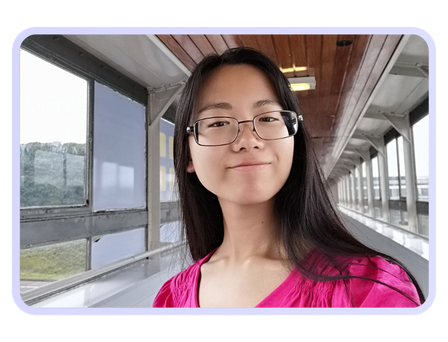
If you are an international student and want to gain access to Caption.Ed for yourself, you can sign up for a free trial here or speak to our team directly here.
Your may also be able to gain access to Caption.Ed through your university by speaking to your international student support team.
Caption.Ed is assistive accessibility software that supports language learning in Higher Education. Developed by Dr Richard Purcell, the technology includes live captioning, transcriptions and helpful note-taking features.
Caption.Ed can help international students by improving language comprehension, clarifying accents, and providing a visual aid to reinforce spoken content. It makes lectures and videos more accessible by allowing students to follow along more easily, even if they’re not fluent in the language. Captions also support vocabulary learning, help with understanding complex phrases, and provide context for cultural references. Overall, Caption.Ed can help enhance focus, retention, and ultimately academic success.
Note-taking software can be a powerful tool for international students, especially when they are navigating language barriers or adjusting to different academic systems. Here’s how it can help:
Language Support and Translation
International students can quickly translate words or phrases they don’t understand, or even translate their notes to their native language.
Speech-to-Text Features
For students who struggle with writing quickly or keeping up with lectures in English, speech-to-text tools, like Caption.Ed, can transcribe what is said in real-time. This means they can focus more on understanding the material rather than worrying about missing important details while writing.
Audio/Visual Support
Note-taking tools like Caption.Ed allow students to record lectures and sync their notes with audio. This means if an international student doesn’t catch something in real-time, they can go back and listen to the lecture again.
Collaboration and Sharing
International students often find it helpful to share their notes with peers for additional clarification or to get insights into how other international students are interpreting the material.
Synced Devices
Note-taking tools like Caption.Ed sync information across devices, meaning international students can easily access their notes whether they’re on their laptop, tablet, or phone. This allows them to study or review notes anywhere, anytime, which is great for flexibility.
Enhanced Focus
The distraction-free interfaces of many note-taking tools like Caption.Ed can help international students focus on the content of lectures and seminars without being overwhelmed by external distractions. This can help them concentrate more on understanding the material rather than getting lost in note-taking.
By offering a range of features like translation, speech-to-text, and easy access to information, note-taking software can help international students stay organised, better understand course materials, and ultimately perform better academically.
Captioning can help international students in several ways:
Improved Understanding of Language
For students who are still mastering English, captions provide a visual reference to help reinforce what’s being said. This can help with vocabulary, pronunciation, and understanding complex sentence structures.
Clarification of Accents or Dialects
Sometimes, accents or regional dialects can make it hard for students to fully understand what is being said. Captions give them a chance to follow along with the content, even if there’s an unfamiliar accent or speech pattern.
Increased Accessibility
Not all international students may be equally proficient in listening comprehension, especially when it comes to fast-paced lectures or technical subjects. Captions slow down the delivery of information and allow students to playback information at their own pace, making it easier to follow along.
Visual Learning Support
Some international students might be visual learners, so having captions can enhance retention and understanding of the material. Seeing the words alongside hearing them can make information more digestible.
Helps with Focus
For students who may struggle with maintaining focus due to language barriers, captions give them a clearer roadmap of the lecture or presentation, making it easier to stay on track.
Cultural Context
Some videos or lectures may include expressions or cultural references that could be unclear to the uninitiated. Captions can provide additional context or translations that can clear up confusion.
Ultimately, captioning makes learning more inclusive and supportive, especially for international students who might face language barriers.
Adjust playback speed
The English language is full of unusual sounds that many non-native speakers struggle to get to grips with. When you record with Caption.Ed, you can adjust the playback speed during playback. And when everything slows down, many students find it easier to analyse and deconstruct meaning while they get to grips with pronunciation.
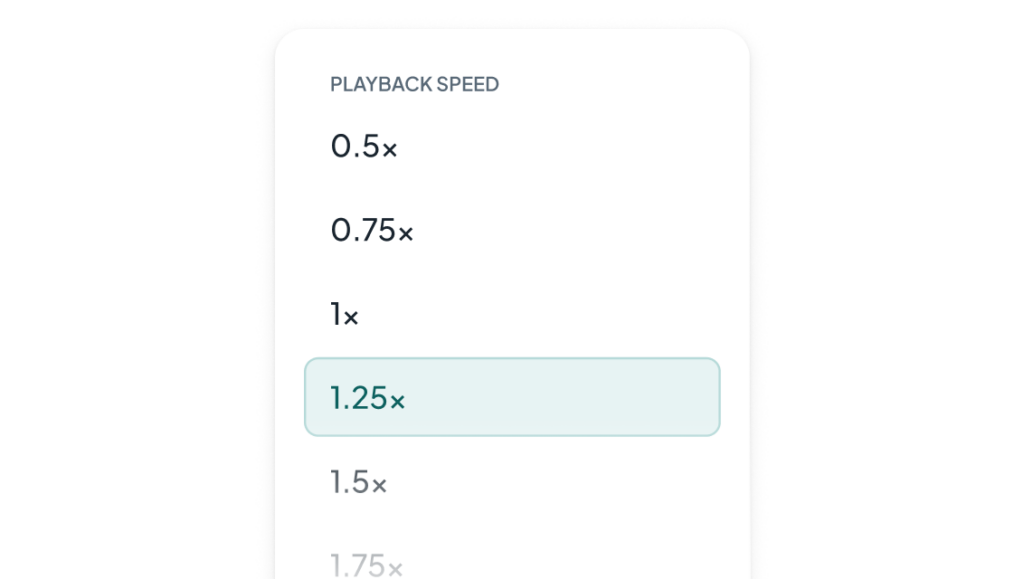
Scroll back over captions
Distracted during a lecture and missed something important? Or working on an assignment and need to remember what was said during a lecture? You can easily scroll back over live captions to recap what was missed.

Supports multilingual captioning
Caption.Ed supports live captioning in 55 different languages. These include Simplified Chinese, Danish, Swedish, Spanish, Italian, German and French. But even when students can understand English, adding captions helps further language learning and assist them with accessing coursework.

Media playback
When you take into account regional accents, odd colloquialisms, and variations in spoken English between nations it’s a recipe for some complex navigation for non-native English speakers. Caption.Ed plays audio back whilst highlighting the words being said – allowing students to read the transcript at the same time as hearing the audio. Helping them to recognise and learn the different ways that words sound with a different accent.
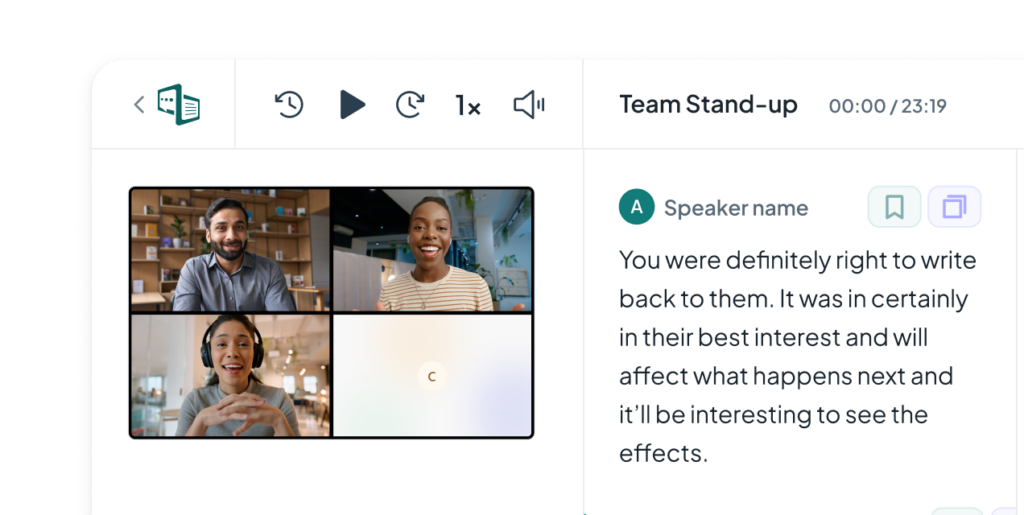
Ready to get started
Join 30,000 people who are already transforming the way they work and study with Caption.Ed.
